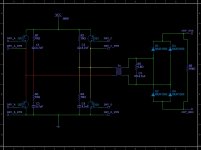blasphemy000
New member
Just a quick question about snubber calculation. How do you do it effectively or is it more of an art? I've built a few SMPSs but they were all based off of other people's designs with minor tweaking so I just used the snubber values that they provided. If I'm designing a power supply from scratch, how do I calculate these? This is for my welder project but if there is some sort of formula then it can be applied to other power supplies as well.
Attached is an image of a very simple example Full H-Bridge driving a switching transformer.
How do I calculate R1-4/C1-4? How do I calculate the subber on the secondary side of the transformer, R5/C5? And also, how do you calculate R6 and what is it's purpose? I've seen R6 on some supplies and absent on others. Also, lets assume that the IGBTs have internal diodes. For my welder the peak bridge current will be 50A at full power and the IGBTs will be multiple paralleled devices...

Attached is an image of a very simple example Full H-Bridge driving a switching transformer.
How do I calculate R1-4/C1-4? How do I calculate the subber on the secondary side of the transformer, R5/C5? And also, how do you calculate R6 and what is it's purpose? I've seen R6 on some supplies and absent on others. Also, lets assume that the IGBTs have internal diodes. For my welder the peak bridge current will be 50A at full power and the IGBTs will be multiple paralleled devices...

